Zongtao Liu
Heterogeneous Graph Neural Networks for Large-Scale Bid Keyword Matching
Nov 01, 2021
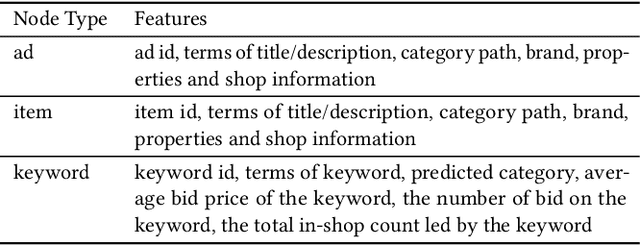
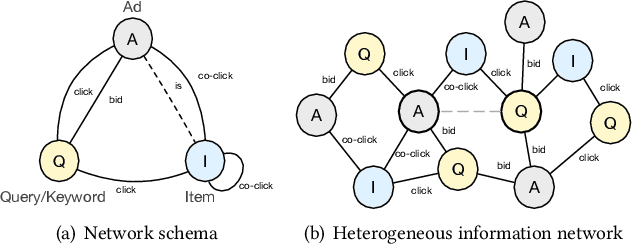

Abstract:Digital advertising is a critical part of many e-commerce platforms such as Taobao and Amazon. While in recent years a lot of attention has been drawn to the consumer side including canonical problems like ctr/cvr prediction, the advertiser side, which directly serves advertisers by providing them with marketing tools, is now playing a more and more important role. When speaking of sponsored search, bid keyword recommendation is the fundamental service. This paper addresses the problem of keyword matching, the primary step of keyword recommendation. Existing methods for keyword matching merely consider modeling relevance based on a single type of relation among ads and keywords, such as query clicks or text similarity, which neglects rich heterogeneous interactions hidden behind them. To fill this gap, the keyword matching problem faces several challenges including: 1) how to learn enriched and robust embeddings from complex interactions among various types of objects; 2) how to conduct high-quality matching for new ads that usually lack sufficient data. To address these challenges, we develop a heterogeneous-graph-neural-network-based model for keyword matching named HetMatch, which has been deployed both online and offline at the core sponsored search platform of Alibaba Group. To extract enriched and robust embeddings among rich relations, we design a hierarchical structure to fuse and enhance the relevant neighborhood patterns both on the micro and the macro level. Moreover, by proposing a multi-view framework, the model is able to involve more positive samples for cold-start ads. Experimental results on a large-scale industrial dataset as well as online AB tests exhibit the effectiveness of HetMatch.
Boosting Graph Search with Attention Network for Solving the General Orienteering Problem
Sep 10, 2021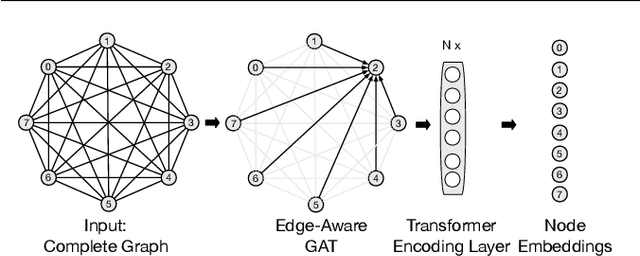
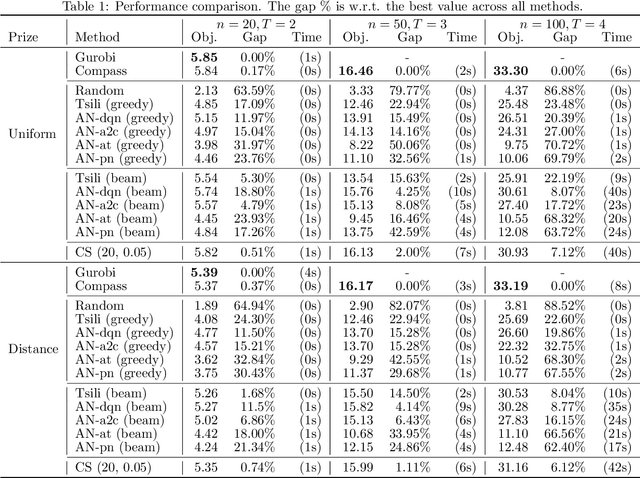
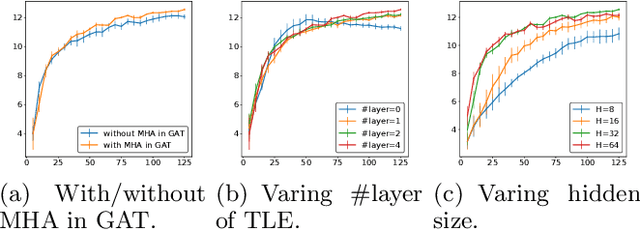
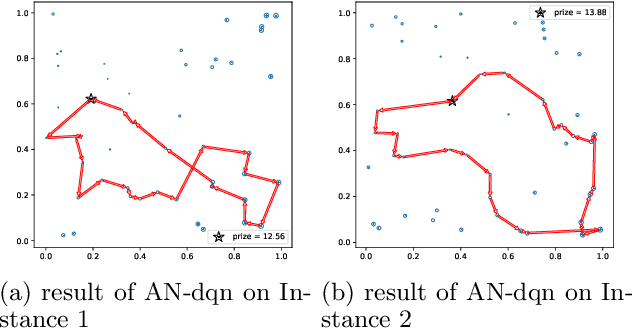
Abstract:Recently, several studies have explored the use of neural network to solve different routing problems, which is an auspicious direction. These studies usually design an encoder-decoder based framework that uses encoder embeddings of nodes and the problem-specific context to produce node sequence(path), and further optimize the produced result on top by beam search. However, existing models can only support node coordinates as input, ignore the self-referential property of the studied routing problems, and lack the consideration about the low reliability in the initial stage of node selection, thus are hard to be applied in real-world. In this paper, we take the orienteering problem as an example to tackle these limitations. We propose a novel combination of a variant beam search algorithm and a learned heuristic for solving the general orienteering problem. We acquire the heuristic with an attention network that takes the distances among nodes as input, and learn it via a reinforcement learning framework. The empirical studies show that our method can surpass a wide range of baselines and achieve results close to the optimal or highly specialized approach. Also, our proposed framework can be easily applied to other routing problems. Our code is publicly available.
Modeling Combinatorial Evolution in Time Series Prediction
May 20, 2019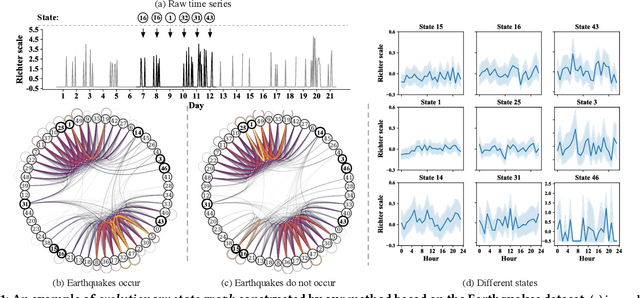
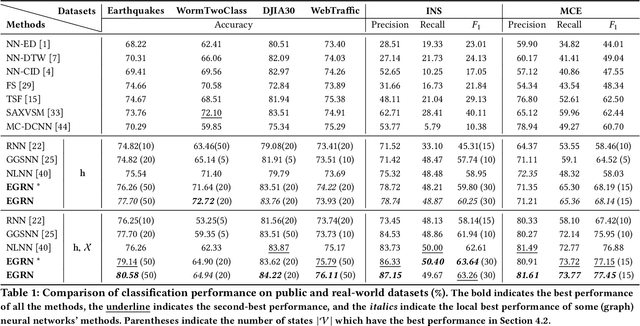
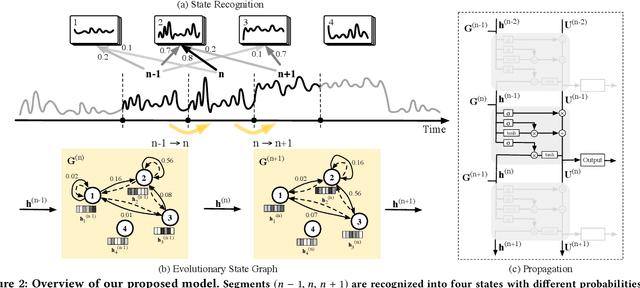

Abstract:Time series modeling aims to capture the intrinsic factors underpinning observed data and its evolution. However, most existing studies ignore the evolutionary relations among these factors, which are what cause the combinatorial evolution of a given time series. In this paper, we propose to represent time-varying relations among intrinsic factors of time series data by means of an evolutionary state graph structure. Accordingly, we propose the Evolutionary Graph Recurrent Networks (EGRN) to learn representations of these factors, along with the given time series, using a graph neural network framework. The learned representations can then be applied to time series classification tasks. From our experiment results, based on six real-world datasets, it can be seen that our approach clearly outperforms ten state-of-the-art baseline methods (e.g. +5% in terms of accuracy, and +15% in terms of F1 on average). In addition, we demonstrate that due to the graph structure's improved interpretability, our method is also able to explain the logical causes of the predicted events.
Capturing Evolution Genes for Time Series Data
May 10, 2019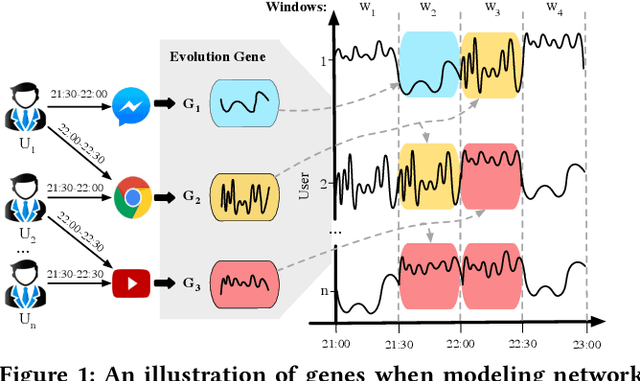
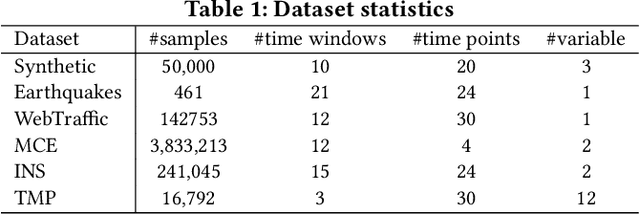
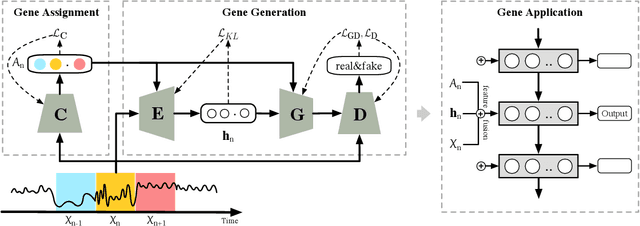

Abstract:The modeling of time series is becoming increasingly critical in a wide variety of applications. Overall, data evolves by following different patterns, which are generally caused by different user behaviors. Given a time series, we define the evolution gene to capture the latent user behaviors and to describe how the behaviors lead to the generation of time series. In particular, we propose a uniform framework that recognizes different evolution genes of segments by learning a classifier, and adopt an adversarial generator to implement the evolution gene by estimating the segments' distribution. Experimental results based on a synthetic dataset and five real-world datasets show that our approach can not only achieve a good prediction results (e.g., averagely +10.56% in terms of F1), but is also able to provide explanations of the results.
 Add to Chrome
Add to Chrome Add to Firefox
Add to Firefox Add to Edge
Add to Edge